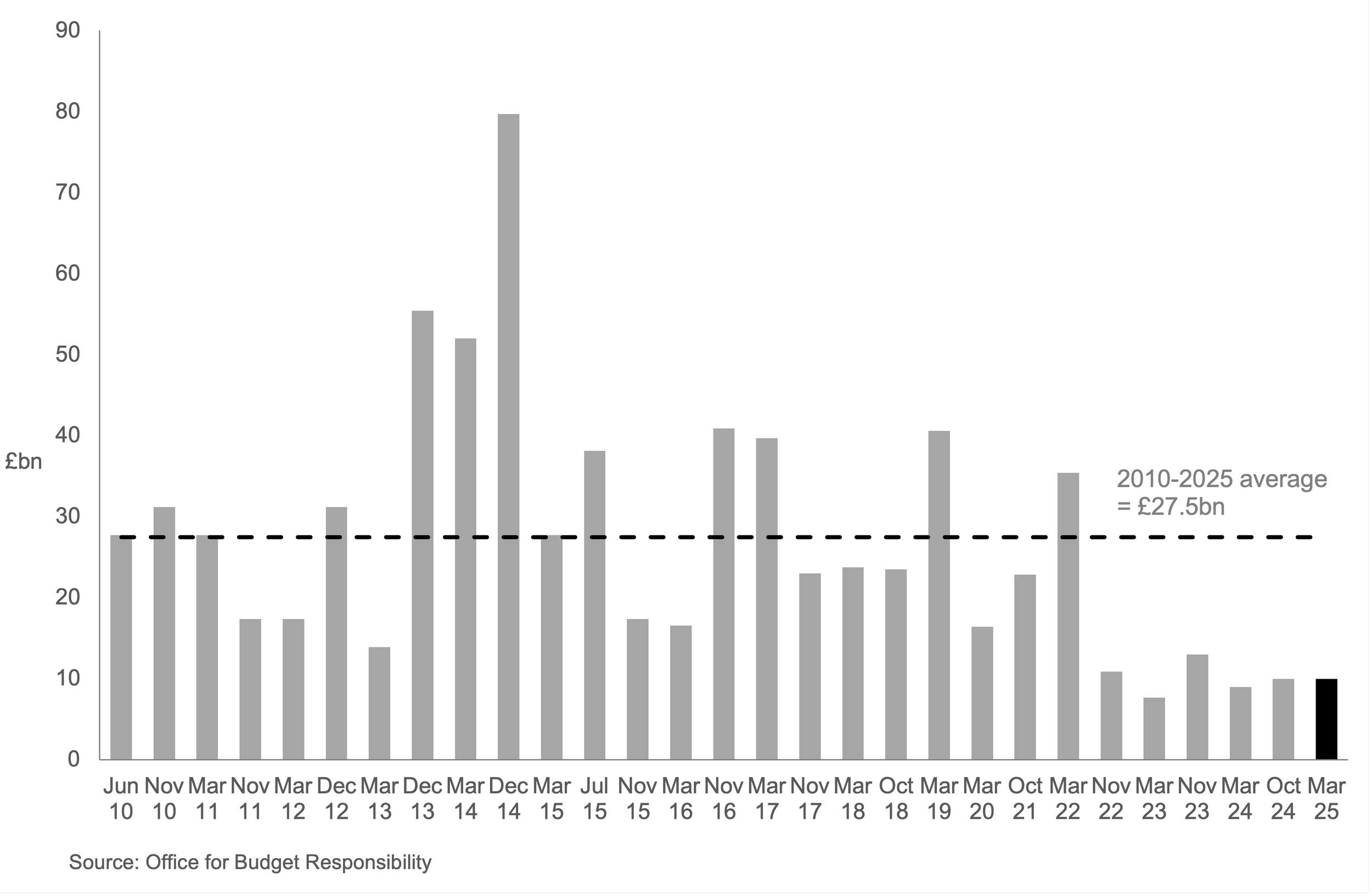UK Week in Review - 7 November 2025
Key takeaways
· Reeves signals broad-based tax rises to rebuild fiscal headroom before Budget.
· Treasury likely targeting up to £40bn tightening to restore fiscal resilience.
· BoE split 5-4 hints December rate cut highly likely.
· Disinflation gathering pace as pay and cost pressures ease across sectors.
· Growth steady but unspectacular; fiscal tightening to be offset by monetary easing.
Scene-setting ahead of the Budget
This week brought two major developments on the fiscal and monetary fronts: a pre-Budget “scene setter” speech from the Chancellor and the Bank of England’s latest interest rate decision. Together, they underscored a clear direction of travel: a significant fiscal tightening in the 26 November Budget is looming, offset by looser monetary policy, with a December rate cut now looking close to certain.
Rachel Reeves’ speech on Tuesday was a deliberate attempt to prepare the public for the widely expected rise in taxes. But it also offered fresh clues about the scale and scope of what’s to come. Her assertion that “we will all have to contribute” opens the door to broad-based tax increases - we think a rise in income tax the most likely lever.
Equally telling was her emphasis on the need to “build more resilient public finances – with the headroom to withstand global turbulence.” That phrasing suggests the Chancellor wants to go beyond simply meeting her fiscal rules, instead rebuilding a buffer large enough to absorb future OBR forecast swings and cyclical shocks. On our estimates, that implies a tightening of up to £40bn if the Treasury aims to make up the fiscal deterioration since March and restore the average fiscal headroom held by Chancellors since 2010 (Figure 1).
Figure 1: Forecast headroom against fiscal targets since 2010
Fiscal tightening, monetary loosening
If that adjustment is achieved through higher income taxes and public spending restraint, the result would be a strongly disinflationary impulse. The Bank of England, in turn, should respond by cutting interest rates more rapidly than previously planned.
This points to a rate cut in December, an expectation reinforced by this week’s knife-edge vote by the BoE’s Monetary Policy Committee. The MPC voted 5-4 to hold Bank Rate at 4%. Two external members, Swati Dhingra and Alan Taylor, voted for a 25 basis-point reduction, consistent with their dovish track record. But in a significant shift, they were joined by BoE deputy governors Dave Ramsden and Sarah Breedon, marking the first time this cycle that two senior internal members broke ranks with the majority.
While most members remained wary of sticky inflation, Governor Andrew Bailey acknowledged that the balance of risks had become more even - language that signals a growing readiness on his part to pivot once further data confirm the recent softening in underlying inflation and pay growth (Figure 2).
Figure 2. UK inflation measures
The next MPC meeting, on 18 December, will take place after the Budget and after two more rounds of inflation and wage data - both likely to show disinflationary momentum building. Against that backdrop, a pre-Christmas rate cut looks almost certain.
Economic activity: improving but unspectacular
On the real-economy side, the October PMIs showed modest signs of renewed momentum: both the services and manufacturing indices rose, hinting at a pickup at the end of Q3. The construction PMI, however, slipped to a five-year low, a result that likely reflects Budget-related uncertainty rather than a fundamental slowdown.
Reassuringly for the MPC, all three surveys reported easing cost pressures, reinforcing the case for monetary easing in December. Overall, activity indicators point to a still-resilient economy but one that is trundling along and far from overheating, precisely the combination that would embolden the Bank to cut rates without fear of reigniting inflation.
The Week Ahead
Labour Market – Tuesday 11 November
After months of softening, the labour market appears to have stabilised, supported by modest GDP growth and firms’ adjustment to April’s increases in employer National Insurance and the National Living Wage. We expect that trend to have continued in the latest data. The LFS unemployment rate is likely to have held steady at 4.8% in the three months to September.
Easing labour-market tightness continues to feed through into pay. Private-sector regular pay growth, a key BoE indicator, slowed to 4.4% in the three months to August and we think it likely dipped again to 4.3% in Q3 - a pace gradually becoming more consistent with the Bank’s inflation target.
GDP (Q3) – Thursday 13 November
Despite a sluggish summer, the economy looks to have seen some growth in Q3. Strong carry-over from Q2 and a likely rebound in September, with retail sales posting their best quarterly contribution in 18 months and the PMIs remaining in expansionary territory, mean we think GDP grew 0.3% in September and 0.4% over the quarter.
That would mark a modest but reassuring sign of resilience heading into the Budget and strengthen the case for a carefully calibrated policy pivot: fiscal tightening to restore sustainability, accompanied by monetary easing to prevent the expansion from stalling.


